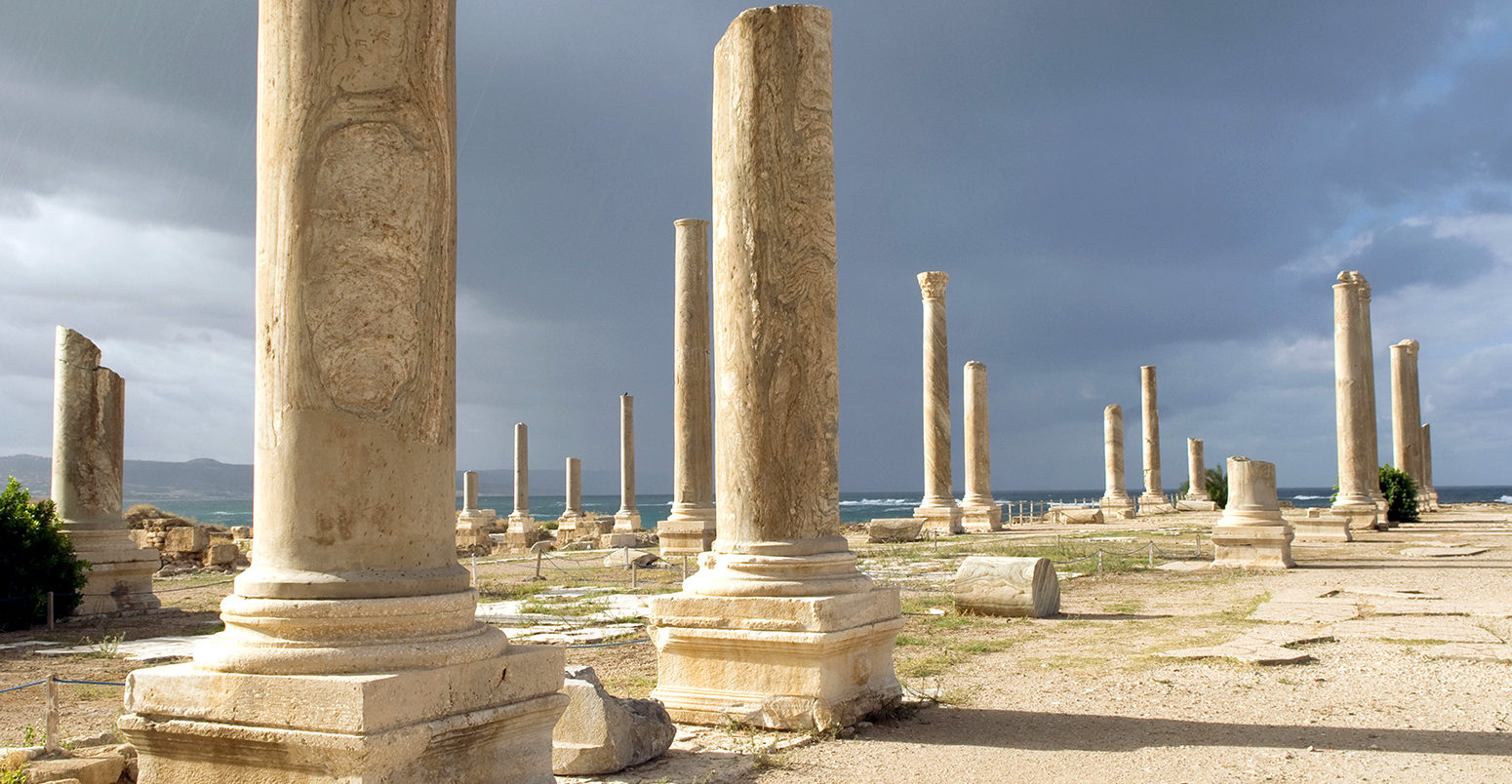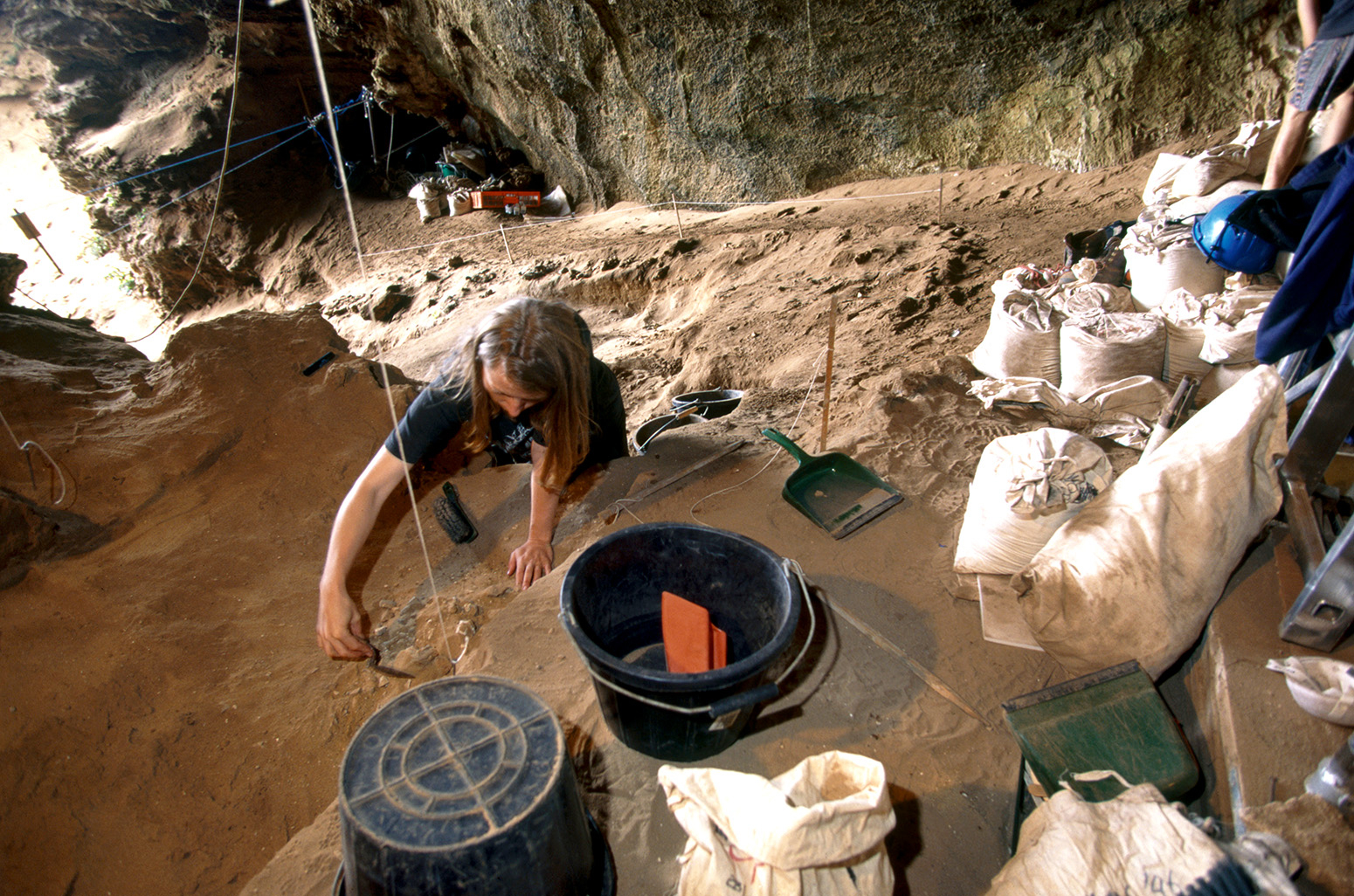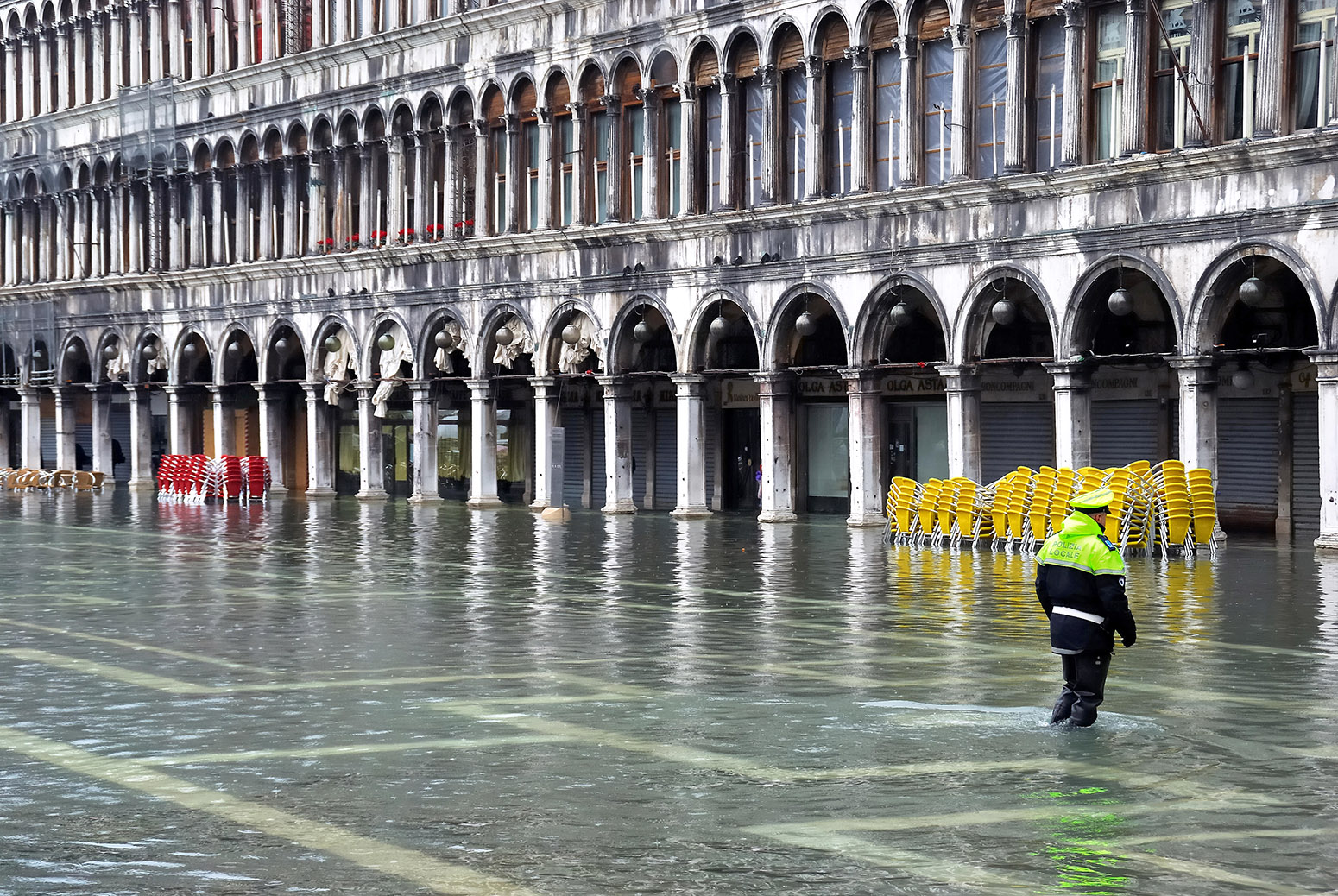
Mapped: The Mediterranean world heritage sites at risk from sea level rise
Daisy Dunne
10.16.18Daisy Dunne
16.10.2018 | 4:00pmOn the eastern coast of Gibraltar, steep cliffs conceal a network of caves containing artwork and engravings that were created by Neanderthals more than 39,000 years ago.
However, this world heritage site, along with dozens of others found across the Mediterranean coast, is now at risk of being damaged or destroyed as a result of sea level rise, a study finds.
Using data taken from the study, Carbon Brief has produced an interactive map showing the flood risk faced by 49 world heritage sites found in southern Europe and northern Africa at different levels of sea level rise.
The findings show that, today, 37 out of the 49 sites are already at risk and, by the end of the century, the average flood risk across the region could increase by a further 50%.
Where possible, it may be necessary to move these iconic sites further inland in order to protect them from climate change, the lead author tells Carbon Brief.
What does the map show?
The map shows 49 coastal sites across the Mediterranean, all of which located at less than 10m above sea level.
Each point on the map represents one of the United Nations Educational, Scientific and Cultural Organisation’s (Unesco) world heritage sites. For a landmark to be considered a world heritage site, it must be of “outstanding universal value”, according to Unesco. In total, there are 263 world heritage sites across the Mediterranean.
Sites on the map include the iconic ancient cities of Venice and Naples in Italy, as well as lesser known sites including Gorham’s Cave Complex, Gibraltar, which contains Neanderthal artwork, and the ruins of Butrint, Albania, a prehistoric settlement which was occupied by ancient Greeks and Romans.
The researchers quantify “flood risk” by developing an index, from zero to 10, that combines potential flood depth and area. The index is calculated using digital maps of topography, data on storm surge heights and projections of sea level rise.
The maps shows the flood risk faced by each site from 2000 to 2100, according to this index. The slider can be used to show the risk at 10-year intervals. On the map, yellow indicates the lowest flood risk while dark purple indicates the highest flood risk.
![]()
Sea level rise increases coastal flood risk by raising water levels, which means that, during high tides or a storm, coastal defences are more likely to become overwhelmed, says Dr Lena Reimann, a researcher at the City University of New York and Kiel University, Germany and lead author of the study published in Nature Communications.
Sea level rise also increases the average height of a “storm surge” – a rising of the sea above the normal tide level during a storm, which causes coastal flooding.
The map can be toggled between different future scenarios of climate change and, thus, sea level rise. These include “RCP2.6”, a relatively low emissions scenario where warming is limited to below 2C above pre-industrial levels; “RCP4.5”, a moderate emissions scenario and “RCP8.5”, a comparatively high emissions scenario.
Flooding fears
The map shows how, at present, 37 out of the 49 sites are already at risk of being flooded by the size of storm expected once every 100 years.
The risk of flooding has already reached the maximum of 10 in several sites, including Venice and its surrounding lagoons. Venice is particularly vulnerable to sea level rise because it is low-lying, built over seawater, and the weight of its buildings is causing the land beneath it to sink.
The flood risk across the region during the 2000s averaged 3.7. If warming is limited to 2C (RCP2.6), this is projected to rise by a quarter (to 4.6) and if little action is taken to tackle climate change (RCP8.5), this could increase by almost half to 5.5.
Two sites that are expected to face considerably higher risks if little is done to tackle climate change are Tipasa, Algeria, a former Roman military base which also plays host to palaeochristian and Byzantine ruins, and the Old Town of Corfu, off the coast of Greece, which has its roots in the eighth century BC.
Eroding shores
The study also estimated how sea level rise could increase the risk of coastal erosion faced by each site.
Coastal erosion occurs when the action of waves, winds and tides eats away at the land, causing the shoreline to retreat. Sea level rise can worsen coastal erosion by causing the tide to move closer to the land and allowing waves to reach further up and into the coastline.
The study finds that, at present, 42 out of the 47 sites are at risk from coastal erosion. This number increases to 46 under the high emissions scenario.
The average erosion risk increases from 6.2 out of 10 in 2000 to 6.4 in 2100 under RCP2.6 and RCP4.5. Under RCP8.5, the average risk increases to 6.4.
The site facing the highest risk of coastal erosion is Tyre, Lebanon – an ancient Phoenician city where, according to legend, purple dye was invented.
Moving monuments
The findings show that, even under relatively low sea level rise, the Mediterranean’s world heritage sites are likely to face increasing risks, says Reimann:
“Adaptation will be essential for those sites to maintain their outstanding universal value, but common adaptation measures are not likely to be adequate for this purpose.”
Common measures to combat coastal flooding and erosion, such as flood barriers and sea dikes, could be inadequate because they are unsightly, she says:
“Different disciplines will need to contribute to design non-conventional, innovative solutions. Such disciplines include architecture, arts, and engineering.”
In some cases, the only option could be to move the site of interest further inland and away from the threats posed by sea level rise, she says:
“Relocation – technically feasible in some cases – may be the last resort for world heritage sites at very high risk and where other adaptation measures cannot be implemented. As the outstanding universal value of each site is bound to its location, relocation must be assessed on a case-by-case basis.”
Reimann, L. et al. (2018) Mediterranean UNESCO World Heritage at risk from coastal flooding and erosion due to sea-level rise, Nature Communications, doi:10.1038/s41467-018-06645-9
Map by Ros Pearce and Tom Prater for Carbon Brief
-
Mapped: The Mediterranean world heritage sites at risk from sea level rise
-
Mapped: Where sea level rise could threaten world heritage sites in the Mediterranean



